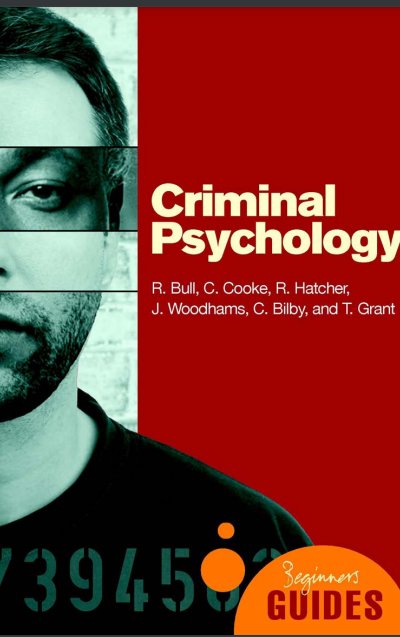

\"Criminal Psychology: A Beginner’s Guide\" by Ray Bull – Long Summary
Ray Bull’s Criminal Psychology: A Beginner’s Guide provides an accessible yet insightful exploration of how psychology is applied to understand, investigate, and prevent criminal behavior. Written for students, professionals, and anyone curious about the intersection of psychology and crime, the book breaks down complex theories into practical, real-world applications. Bull examines both the internal factors (such as personality traits, mental illness, cognitive distortions) and external influences (such as upbringing, social environment, peer groups) that can lead individuals toward criminal actions.
The book emphasizes the role of psychological profiling, eyewitness testimony, memory, and interviewing techniques in the criminal justice system. Bull explains how forensic psychologists help law enforcement not only in identifying suspects but also in improving investigative methods, ensuring ethical practices, and reducing miscarriages of justice. One key theme is the fallibility of human memory; the book highlights how eyewitness accounts, while often trusted in court, can be unreliable due to suggestibility, stress, or leading questions during interrogation.
Bull also explores offender profiling, showing how psychologists analyze crime scene evidence, behavioral patterns, and offender motives to predict characteristics of unknown criminals. While acknowledging its limitations, he demonstrates how profiling can narrow investigations when used alongside solid evidence. The book further discusses rehabilitation and the prevention of reoffending, emphasizing psychological interventions such as cognitive-behavioral therapy for offenders, anger management programs, and social reintegration strategies.
Importantly, Bull bridges theory with practice by drawing on real-life case studies, legal examples, and psychological experiments. He shows how criminal psychology is not about sensational “mind-hunter” techniques often portrayed in media, but rather about applying scientific methods to understand behavior, support victims, and promote justice.
In essence, Criminal Psychology: A Beginner’s Guide serves as both an introduction to forensic psychology and a practical manual for understanding the psychological dimensions of crime. It highlights how psychology helps us grasp why people commit crimes, how investigations can be improved, and what can be done to reduce criminal behavior in society.































.jpg)


.png)



.jpeg)
.jpg)

.jpg)












.jpg)


.jpg)

.jpeg)
.jpg)


.jpg)






.jpeg)



.jpeg)

.jpg)










.jpeg)




